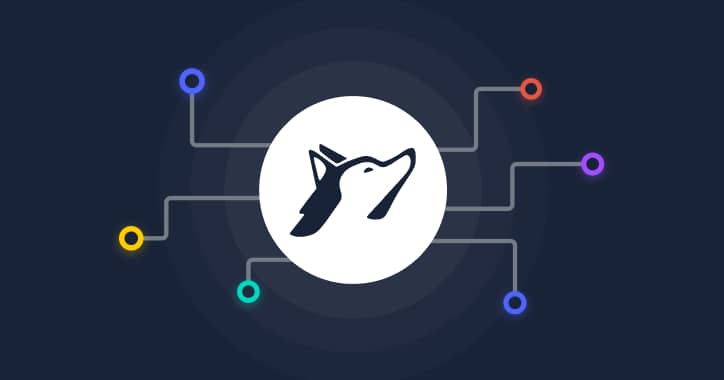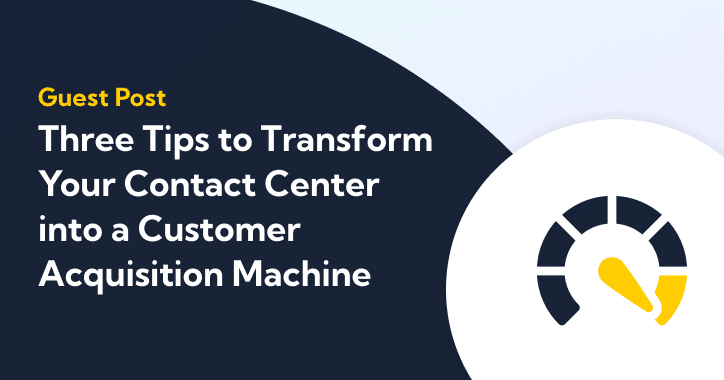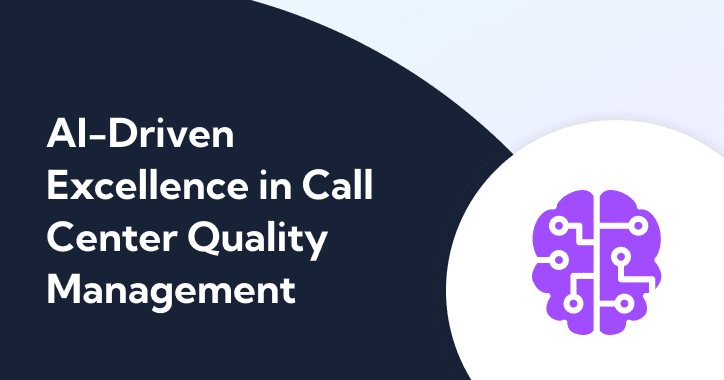
Monitoring agent performance is fundamental for keeping your call center running at optimal levels.
There are many metrics and KPIs (Key Performance Indicators) that give you insights into agent productivity, customer satisfaction, and employee satisfaction. These call center industry-standard metrics can significantly improve your decision-making process and make your agents and customers happier.
This guide will introduce you to some of the most important call center metrics and KPIs.
Key Metrics for Measuring Agent Performance
These are the most relevant call center performance metrics to measure:
Average After-Call Work (ACW)
The average after-call work, or ACW, is the time an agent spends carrying out additional work after the call has ended. This work is often divided into logging data, adding call notes, and other tasks.
Ideally, you’d want to keep the ACW time at a minimum to enable your agents to respond to more customer calls. The ACW time is measured in seconds, and you can calculate it using this simple formula:
Minutes spent by an agent after call /number of calls taken during that time frame
ACW is vital for call centers because it gives you an indicator of your agent’s efficiency. If an agent spends more time on after-call work than necessary, you can make the data input process more straightforward and improve your agent training methodologies.
Call Volume
Call volume is the average number of outgoing and incoming calls a contact center handles in a given time frame.
This calling metric can influence key managerial decisions related to upsizing or downsizing teams to cope with fluctuating workloads. It’s also a key factor in determining the number of overtime hours required to meet demand.
Most call centers split call volume into calls handled by automated systems and calls handled by agents.
Average Call Abandonment Rate
The average call abandonment rate (ACAR) indicates the number of customers that abandon calls if they wait on hold for too long.
When calculating the ACAR, it’s important to neglect calls that were abandoned in the first few seconds since these calls are mostly made by customers by accident. Here’s an easy formula to evaluate your ACAR:
(Number of abandoned calls / total number of calls) x 100%
As a general rule of thumb, customers will wait for a reasonable amount of time for support calls (unfortunately, it’s what people have come to expect). If they have to transfer several times, however, they’re more likely to abandon the line. And when it comes to sales calls handled by sales teams, call abandonment rate is noticeably higher in general.
If the ACAR is alarmingly high, aim to improve agent efficiency to free them up to take on more calls, and/or hire more agents. Hiring is often done seasonally or during expected call surges, such as the annual Open Enrollment period (more tips on that here) to keep ACAR to a minimum.
Average Time in Queue
The average time in queue is the amount of time a customer spends waiting on hold. Longer waiting times result in missed opportunities and a higher average call abandonment rate (ACAR).
There’s also often a compounding effect to wait time. If a customer decides to wait a long time until an agent answers the call, they may complain about how long they’ve waited on hold, which in turn increases call time even more due to an increase in call center wait time industry standard. Then, customer satisfaction (CSAT) can also suffer.
The tolerable time in the queue varies depending on the industry and call type. For example, a longer queue time is more tolerable for tech support calls than a restaurant reservation call.
To calculate the average time in queue, use this formula:
Total time callers spend in the queue / total number of calls
Service Level Scores
The service level scores are a set of contact center quality metrics that provide a general idea of your call center’s performance and efficiency.
There are multiple formulas used to evaluate the service level scores, which are:
- (Number of calls answered in a given time frame / total number of calls) x 100%
- ((Number of calls answered in a given time frame Y seconds / (Total number of answered+abandoned calls)) x 100%
- ((Number of calls answered in a given time frame) / (Total number of answered calls total number of + total abandoned calls after X seconds)) x 100%
Most call centers tend to associate service level scores with cost efficiency. Typically, the smallest unit of time used to measure these scores is 15 minutes, but it can vary from call center to call center.
Average Response Time (ASA)
The Average Response Time (ASA) corresponds to the average duration between receiving an incoming call and an agent responding to it.
This isn’t to be confused with the average time in queue, which doesn’t take into account the time it takes for the call to go through the call center’s self-service IVR (Interactive Voice Response) system.
The metric can be useful in determining how accessible the service is to customers by measuring the average speed of the answer. Based on the results, you’ll be able to define service goals, like answering Y% of calls in X seconds, which can also contribute to a lower call abandonment rate.
To calculate the average time it takes to respond to a customer, use this simple formula:
Total wait time for answered calls / Total number of answered calls
Call Transfer Rate
The call transfer rate reflects the percentage of calls that are transferred to another agent or supervisor.
High transfer rates may indicate a problem with the IVR system. Also, in some cases, the agent may transfer the call if they do not feel well suited to answer a customer’s questions, or if they do not have the information/knowledge set to address the call.
Note: a call transfer doesn’t necessarily indicate a problem since the customer may request getting the call transferred to discuss an additional issue or inquire about another product or service offered by the organization.
Key to understanding the call transfer rate is the destination. Are calls being transferred to managers frequently? If so, you may need to look at ways to empower agents to handle more call types and questions and minimize escalations.
Call transfer rate is calculated with the following formula:
(Number of transferred calls / Total number of calls answered) x 100%
First Call Resolution (FCR)
First call resolution (FCR) is a metric used to measure customer satisfaction. It evaluates the average number of issues that get resolved in the first call. The higher the number of customers that get a first contact resolution, the more likely your customers will remain loyal, as they know they can count on you to quickly resolve issues.
To calculate the FCR, use the following formula:
Number of customer inquiries resolved in one call / total number of resolved calls
Your goal is to make the FCR percentage higher than your transfer rate to improve customer experience.
Customer Satisfaction Score (CSAT)
The customer satisfaction score (CSAT) determines how satisfied customers are with their calls.
Data collection for calculating the CSAT is usually done with an after-call survey that prompts customers to rate the support they received on a five-point scale. Here’s an example of a five-point scale customer satisfaction survey:
- 1-star: Highly unsatisfied
- 2-star: Unsatisfied
- 3-star: Neutral
- 4-star: Satisfied
- 5-star: Highly satisfied
To calculate the CSAT score, try this formula:
(Total number of 4-star and 5-star responses / Total number of responses) x 100%
The formula only takes into account 4-star and 5-star responses, as these responses tend to reflect customer retention the most.
On a side note, keep in mind that you must give your customers the freedom to opt-out or take part in the survey.
Average Handle Time (AHT)
The average handle time (AHR) measures the average amount of time a call center agent spends to resolve a customer’s issue. It encompasses the actual phone conversation and post-call work, as well as the transfer and hold time.
The lower the AHT value is, the more productive your contact center will be. Higher-than-normal AHT values may indicate a problem with how your agents handle customers.
However, keep in mind that calls that are too short may also signal a problem, especially if the customer satisfaction scores are low. Agents might be rushing customers through calls and not providing enough assistance.
In either case, training your agents and providing them with advanced conversation intelligence tools can significantly contribute to better AHT values.
Here’s how to calculate the AHT in seconds:
(Total talk + hold + follow-up time) / total number of calls
Agent Turnover Rate
Agent turnover rate is a call center metric that measures how satisfied your agents are. A high turnover rate may indicate a problem with the hiring and onboarding process. It can also mean that the work environment is affecting team morale.
Another major cause of high turnover rates is employee stress and burnout. If agents are overloaded or usually find themselves having to work overtime, expect the turnover rate to keep increasing.
To evaluate the turnover rate, use this formula:
(Number of agents that quit / average number of agents) x 100%
5 Best Practices for Measuring Metrics

Here are some tips that come in handy when measuring and improving your contact center metrics:
1. Define Objectives
Setting clear goals is the most important thing to do when measuring metrics. Without having any predefined objectives in mind, it’ll be hard to translate the metrics into meaningful insights.
Along with goal-setting, you must identify the most essential KPIs & metrics for call center profitability.
2. Measure Both Quantitive and Qualitative Metrics and KPIs
The best way to gain insights into your call center performance is to measure both quantitive and qualitative metrics. Focusing on numbers may not always give you the full picture of what’s happening in your call center. A long call seems bad on paper, but if the call resulted in a satisfied customer, its duration becomes irrelevant.
Zappos, an American online retailer, holds the record for the longest customer service call of all time, reaching over 10 hours. You can imagine how such a long call would jeopardize most of your agent performance metrics. On the other side of the coin, that call had a major impact on improving customer satisfaction. It also presented an opportunity for Zappos to improve its reputation and leverage the call in its marketing efforts.
In such extreme situations, it might be a good idea to exclude the call from your calculations, as such an outlier wouldn’t certainly skew your metrics.
3. Benchmark Your Metrics
Measuring your call center metrics without familiarizing yourself with the industry standards can make it harder for you to determine if you’re going in the right direction. Ideally, you’d want your agency metrics to match or be better than your industry’s standards.
However, there are many variables that affect your call center’s performance, and in many cases, reaching the industry standards may be out of reach for your call center. Nevertheless, knowing the benchmarks should at least give you an idea of how far you can improve your metrics.
4. Identify Correlations Between Different Metrics
In many situations, your call center metrics can be directly correlated, and analyzing these correlations can make it easier to improve your metrics and track your KPI for call centres. For instance, if the customer satisfaction score (CSAT) is low and the average handling time is high, reducing the average handling time may improve the customer satisfaction score.
Similarly, a high call volume can result in call center employee burnout, which will consequently increase call center attrition.
5. Engage Your Agents
Keeping your call center agents informed of the key metrics and how they change from day to day or month to month can help them improve their performance. By informing them of the metrics that are getting better or worse and providing quality call center coaching, they’ll be able to identify their strong and weak points.
Additionally, by creating a two-way street for feedback with your agents. you may uncover new talk track ideas and strategies you might not have thought of. Agents, particularly your tenured agents, are an untapped well — use them!
Keeping agents engaged is core to their well-being, as it makes them feel heard, valued, and like they are part of something bigger.
2022 Metric Benchmarks
Now that you’ve learned about the most prominent call center metrics and how to measure them, you must familiarize yourself with the latest metric benchmarks and data analytics trends for lead generation and sales that you can weigh your measured metrics against.
Here’s a table that you can use as a guide:
| Performance Metric | Metric Benchmark (As of 2022) |
| Average After-Call Work (ACW) | 45 Seconds |
| Average After-Call Work (ACW) | 4,400 Calls per Month |
| Average Call Abandonment Rate | 5-8% |
| Average Time in Queue | 25.8 Seconds |
| Service Level Scores | Answer 80% of Calls in 20 Seconds |
| Average Response Time (ASA) | 28 Seconds |
| Call Transfer Rate | 9-10% |
| First Call Resolution (FCR) | 70-75% |
| Customer Satisfaction Score (CSAT) | 80% |
| Average Handling Time (AHT) | 6 Minutes and 10 Seconds |
| Agent Turnover Rate | 30% |
References: Live Agent, Call Center Helper
Breaking KPI Records with Balto
Reaching the industry standards with your call center metrics can be a long, resource-intensive process without a modern call center software solution.
With Balto, you’ll be able to leverage the power of conversational AI to maximize your call center operational efficiency with Natural Language Processing (NLP), a perfected call quality monitoring solution, a more efficient onboarding process, and insightful conversation analytics.
We’re happy to offer you a free demo of our solutions so you can experience them in action. We also encourage you to take a look at some of our recent client case studies to understand how Balto can help organizations like yours understand call center statistics and break KPI records.






